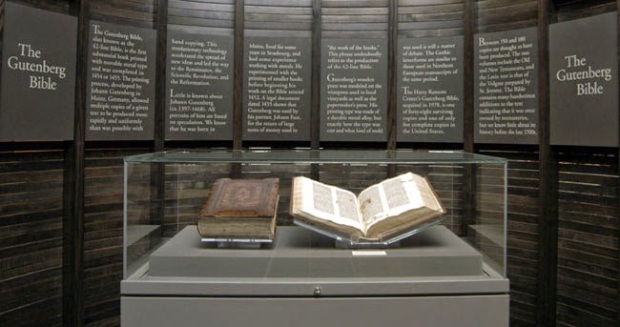Bioingine.com | Ingine Inc
1. 1452, Printing Press Revolutionized Professional Knowledge Distribution

1452, with the aid of borrowed money, Gutenberg began his famous Bible project. Two hundred copies of the two-volume Gutenberg Bible were printed, a small number of which were printed on vellum. The expensive and beautiful Bibles were completed and sold at the 1455 Frankfurt Book Fair, and cost the equivalent of three years’ pay for the average clerk. Roughly fifty of all Gutenberg Bibles survive today.

Printing Press:- By giving all scholars the same text to work from, it made progress in critical scholarship and science faster and more reliable.
2. WWW :- Introduced non-linear linking or information across systems.
In March 1989, Tim laid out his vision for what would become the Web in a document called “Information Management: A Proposal”.Believe it or not, Tim’s initial proposal was not immediately accepted. In fact, his boss at the time, Mike Sendall, noted the words “Vague but exciting” on the cover. The Web was never an official CERN project, but Mike managed to give Tim time to work on it in September 1990. He began work using a NeXT computer, one of Steve Jobs’ early products.

3.A – 1999, Tim Berners-Lee described the Semantic Web vision in the following terms
I have a dream for the Web [in which computers] become capable of analysing all the data on the Web, the content, links, and transactions between people and computers. A Semantic Web, which should make this possible, has yet to emerge, but when it does, the day-to-day mechanisms of trade, bureaucracy and our daily lives will be handled by machines talking to machines. The intelligent agents people have touted for ages will finally materialise. (1999)
3.B – 1st Order Semantics :- Knowledge Engineering and the Web of Data – Harald Sack is Senior Researcher at the Hasso Plattner-Institute for IT-Systems Engineering (HPI) at the University of Potsdam
4. 2014 2nd Order Semantics :- Adding Probabilistic Semantics to better Reasoning employing Knowledge Engineering
4.A – Bayesian Reasoning from The Uncertainty on Web
Paulo Cesar G. da Costa, Kathryn B. Laskey , Kenneth J. Laskey
4.B :- 2014 – Dr. Barry Robson proposed using quantum mechanics as a basis for heuristics with the design and implementation of inference nets.
Split-Complex Numbers And Dirac Bra-Kets
Dr. Steven Deckelman · Dr. Barry Robson
Dr. Barry Robson
2014 :- Q-UEL – Probabilistic Semantic achieving, a WW4 for Medicine
Probabilistic Medical Ontology for Medical Reasoning by HDN Inference
4.B 1 Q-UEL The Dirac Notational Language :- To represent High Dimensional Data and Multi-lateral Subject
Q-UEL (Quantum – Universal Exchange Language), a web-based universal exchange and inference language for healthcare and biomedicine . It is extended to the more traditional domain of public health analysis including general population health sampling, healthcare quality surveys, and screenings. The techniques used can include or extend to cross-sectional studies, cohort studies, and other similar investigations including, to some extent, clinical trials.
4.B 2 HDN The Knowledge Model :- To represent 2nd Order Semantics
HDN – Medical Ontology for Medical Reasoning
- Hyperbolic Dirac Net (HDN) developed for medical inference overcoming the limitation of acyclic modeling in Bayes Net (BN), which leads into Directed Acyclic Graph (DAG). Motivating being that, while the traditional Bayes Net (BN) is popular in medicine, it is not suited to that domain.
- Medical domain, as such has many interdependencies, owing to high dimensionality of the data and multi-lateral nature of the subject, such that any “node” can be ultimately conditional upon itself.
- A traditional BN is a directed acyclic graph by definition, while the HDN is a bidirectional general graph closer to a diffuse “field” of influence. Cycles require bidirectionality; the HDN uses a particular type of imaginary number from Dirac’s quantum mechanics to encode it. Comparison with the BN is made alongside a set of recipes for converting a given BN to an HDN, also adding cycles that do not usually require reiterative methods. This conversion is called the P-method.
The obvious problem here is that any knowledge network prepared to realistically model the world must allow for cyclic pathways that can be traced through the connections (edges) of the network (graph). To the extent that we can think of nature as a graph at all, it must be a general graph, but because relationships can potentially exist between any node and every other node but present as matters of degree, it can be further objected that the ideal picture is not even a general graph with cycles, but something closer to a continuous field of interactions between things. This perception also relates to the employ of conditional probabilities.
Meaning as ubiquitously and diversely seen in street, highway, train and subway maps, family ―trees, biochemical pathways, schematics in medical student‘s lecture notes, flowcharts, Feynman diagrams and path integrals (important for HDN philosophy) and not least the concept of the Semantic Web. With the interesting exception of such as physical, chemical, biological and computational processes that necessarily imply a probabilistic basis for transitions, their ubiquitous and confident use is obviously due to the fact that the relationships are held as being certain, not probabilistic. Intuitive probability calculation can be highly misleading as discussed in this report, but it is hard even for the human brain to make a mess of estimating overall probability when all the multiplied probabilities are assumed to be 1.
HDN – Inference Nets to :-
- “Observe” – mine data
- “Evaluate” – compute a very large number of the more significant probabilities and render them as tags,
- “Interpret” – use a proposed inference net as a query to search amongst the probabilities represented by those tags, but only looking for those relevant to complete the net and assign probabilities to it, assessing what is available, and seeing what can be substituted, and
- “Decide” – compute the overall probability of the final inference net in order to make a decision